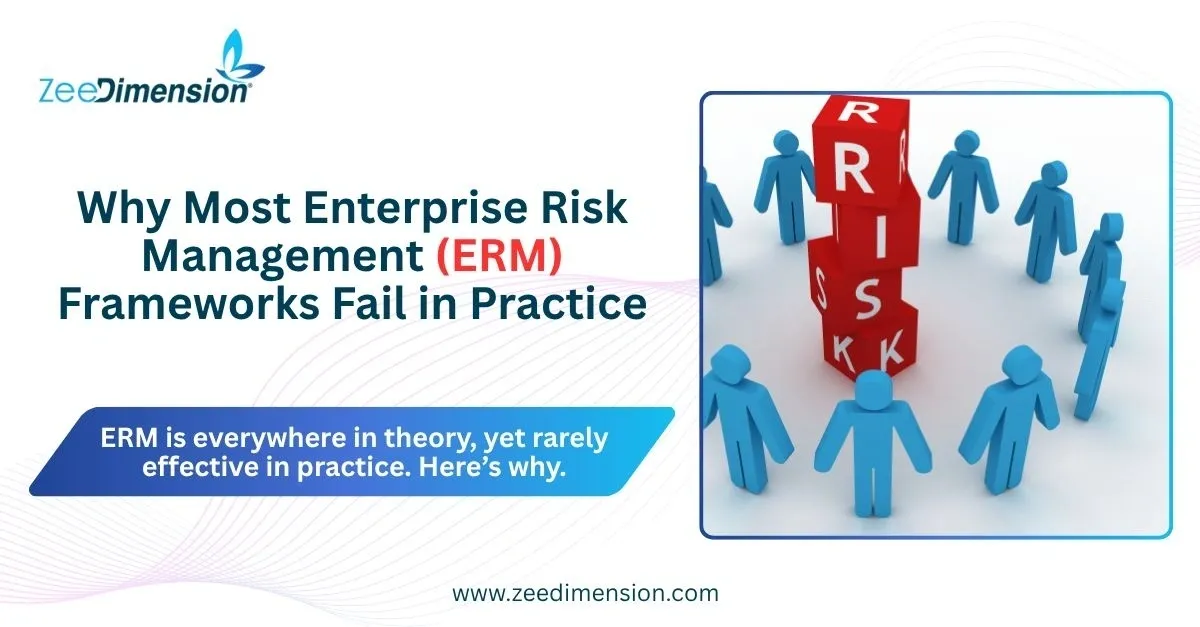
ERM is everywhere in theory, yet rarely effective in practice. Here’s why.
Problem #1 — Misalignment with Strategy
ERM often operates in isolation.
When it’s disconnected from business strategy, it becomes irrelevant.
Outcome: Risks aren’t aligned to what really drives the business.
Problem #2 — Over-Engineering
Too many frameworks become bureaucratic monsters.
Processes multiply. Reports pile up.
Outcome: ERM becomes a checkbox, not a value-add.
Problem #3 — Weak Risk Culture
Risk isn’t owned by everyone.
Without cultural buy-in, risk management stays in a silo.
Outcome: Blind spots persist. Escalation doesn’t happen.
Problem #4 — Static, Not Dynamic
ERM often operates on an annual cycle.
Risks evolve daily.
Outcome: Frameworks quickly become outdated.
Problem #5 — Leadership Disengagement
Boards talk about risk, but rarely act on it.
Risk appetite stays theoretical.
Outcome: ERM lacks influence on key decisions.
Problem #6 — Over-Reliance on Tools
Tools don’t manage risk. People do.
Dashboards without action are decoration.
Outcome: Data overload, zero impact.
Problem #7 — Ignoring Human Bias
Risk frameworks assume rational thinking.
Humans aren’t always rational.
Outcome: Risks are underestimated or misunderstood.
Problem #8 — Rigid & Inflexible
Complex models break under pressure.
Agility is essential.
Outcome: Slow, ineffective responses during crises.
Problem #9 — Poor Link to Performance
If risk isn’t tied to KPIs or incentives, no one cares.
Outcome: Performance targets drive risky behavior unchecked.
Problem #10 — Weak Capability
ERM teams need more than compliance skills.
Business acumen matters.
Outcome: Poor engagement, lost opportunities.
The Core Truth
Frameworks don’t fail — mindsets do.
ERM must be embedded in how people think, act, and decide daily.
Call to Action
How is your organization ensuring ERM delivers real value?







